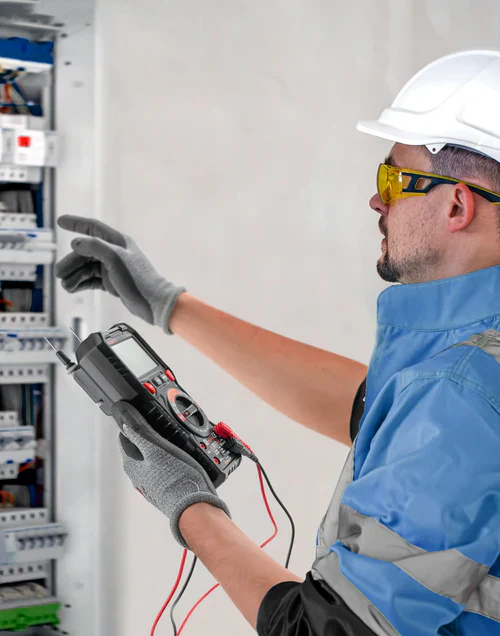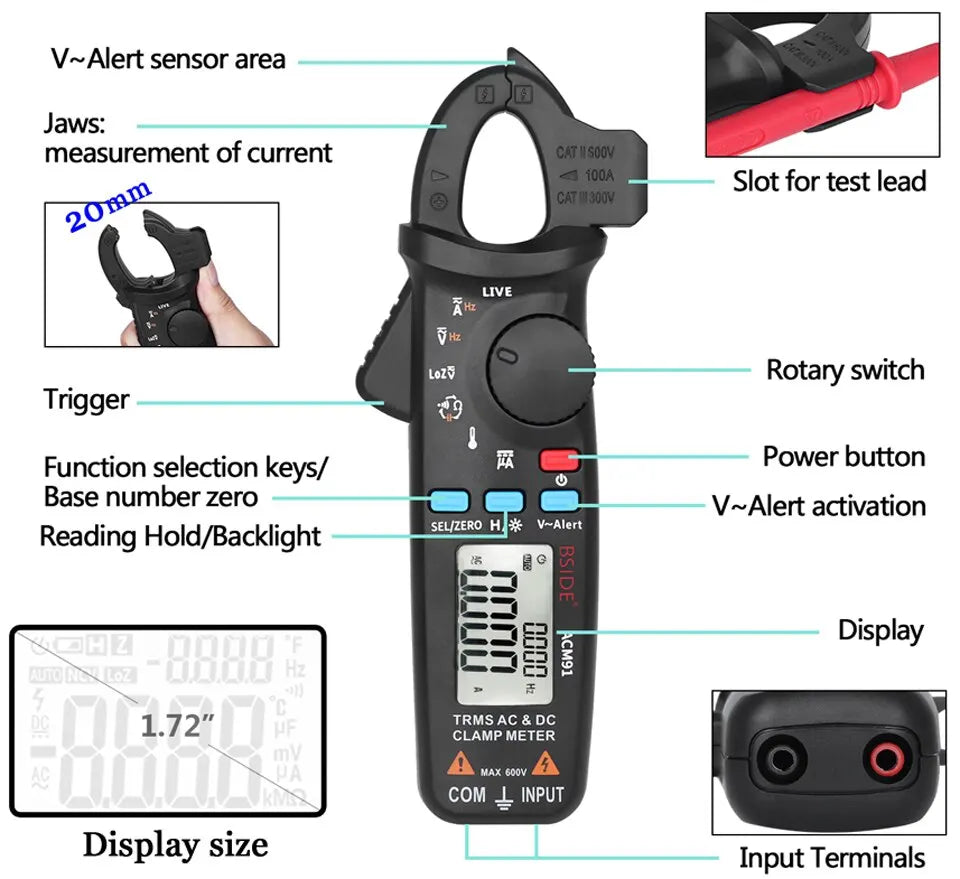Digital multimeters are indispensable tools for electricians, engineers, and DIY enthusiasts. Whether you're testing voltage, current, resistance, or continuity, a reliable multimeter like those from BSIDE offers precise and fast readings. However, incorrect usage can not only damage your device but also pose serious safety risks. In this blog, we'll explore what to avoid when using a multimeter—and how to use it safely and effectively.
1. Avoid Selecting the Wrong Measurement Mode
Using the wrong function is one of the most common mistakes. For instance, measuring voltage while the multimeter is set to measure current can cause internal damage or blown fuses. Always double-check that you've selected the correct mode for the test—voltage (AC/DC), resistance, or current.
Example: The BSIDE ZT-X True RMS Multimeter has a clear triple display and a rotary dial that makes switching modes easy, reducing the risk of misselection.
2. Never Touch the Metal Probes During Use
When testing live circuits, never touch the metal ends of the probes. This could result in electric shock. Always hold the insulated part of the probe and ensure you're wearing protective equipment when working with high voltages.
3. Avoid Using a Multimeter with Damaged Probes or Leads
Cracked insulation or frayed cables on probes are hazardous. Damaged leads can cause inaccurate readings or expose you to live voltage.
Tip: Inspect your leads regularly. BSIDE multimeters like the S30X Auto Range Multimeter often come with robust, durable cables designed to last longer under tough usage.
4. Don’t Try to Measure Current in Parallel
Measuring current requires placing the multimeter in series with the load—not in parallel. Doing so may result in a short circuit or damage to the meter.
5. Avoid Using a Multimeter Beyond Its Ratings
Exceeding the voltage or current range of your multimeter can damage its internal components. Always check the specifications of your device.
Example: The BSIDE S11 Smart Multimeter, with a color LCD and NCV function, is designed with overload protection and a high safety rating—ideal for users who value both performance and protection.
6. Skipping the “Zero” Check for Resistance
When measuring resistance, always check if the leads are giving a near-zero reading before connecting to the circuit. Skipping this can cause inaccurate results.
7. Using a Multimeter Without Auto-Ranging Awareness
Auto-ranging makes using a multimeter easier, but it can confuse some users. Be aware that the displayed range may vary slightly, especially for sensitive components. For those who prefer full control, models like the BSIDE ZT-M0 Manual Multimeter offer manual range selection.
Final Thoughts
Using a digital multimeter safely and effectively comes down to understanding its features and limitations. Avoiding these common mistakes can protect you and extend the life of your equipment. Whether you're a professional or hobbyist, BSIDE offers a wide range of affordable, feature-rich tools—from the beginner-friendly BSIDE A1X Digital Multimeter Pen to the advanced BSIDE HX1 Thermal Imaging Multimeter.
Shop Trusted BSIDE Multimeters
Visit our official store to explore the full line of BSIDE multimeters, including bestsellers like the ZT-X, S11, and S30X. Designed with both accuracy and safety in mind, BSIDE products help you work smarter and safer.
🛒 Explore now at:https://bsidemeter.com




Partager:
What is a Good Cheap Multimeter?
How to Use a Multimeter for Beginners